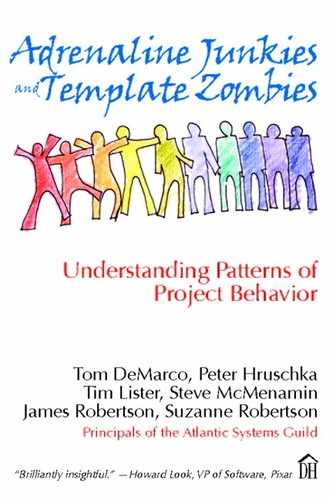58. Cool Hand Luke
,
“Confrontation 2” by Chaim Koppelman, used with permission
A legitimate conflict is interpreted as a “failure to communicate.”
Just as it is an error to assume that knowledge work can have no emotional content, so it is an error to misattribute a colleague’s upset. Mis-attribute is something we do all the time. The most common form of misattribution is to blame any failure to harmonize on poor communication. This is the ultimate scapegoat. Even the most un-self-critical organizations are willing to blame themselves for lousy communication skills. As consultants, we often find ourselves on the receiving end of this self-critique, paradoxically often delivered in the most elegant and lucid manner. People can be at their most communicative when reporting on what bad communicators they are.
In the Paul Newman film Cool Hand Luke, a prisoner faces a sadistic jail warden who precedes each punishment with the statement, “What we have here is a failure to communicate.” In this case, as in many others, there is failure involved, but no lack of communication. What passed between the two parties in the film was the convict’s indomitable will to resist and the warden’s raw, red hatred. Each understood the other perfectly.
The next time you hear someone in your organization refer to a failure to communicate, look underneath for the subtitle. It’s likely to read, “I understand you clearly, but I hate what you’re saying.” Calling this a communication failure turns everyone’s attention away from the real cause—legitimate conflict—and focuses attention instead on a false cause. The result is a more-and-more elaborate effort to communicate a message that is being flat-out rejected.
The deep-seated cause here is a belief that conflict in a business setting is somehow unprofessional. The reasoning goes like this: “We’re all working for the same organization, so how can there be conflict unless someone is not acting professionally?” This question only makes sense if you believe that all parties in an organization are perfectly aligned. Organizations are big, messy organisms that are shaped by evolution as much as design. They are full of conflict. Their charters (if anyone has bothered to specify them) entail values that are sometimes mutually exclusive. The organization may assert a determination to maximize both quality and productivity, but there are always trade-offs between the two. The various component organizations that make up the whole are sometimes pulling in different directions: Engineering and Marketing are often at loggerheads; Sales and Finance may be slightly out of sync; Human Resources and Corporate Communications may not sing in perfect harmony. Some people in the organization have a perspective that spans one-to-five years out, while others have a oneday to one-month perspective. There is legitimate conflict everywhere.
When conflict is considered natural and perfectly professional, the parties turn to proven conflict-resolution techniques instead of the false god of improved communication. The result may not be perfect, but it is always better.
